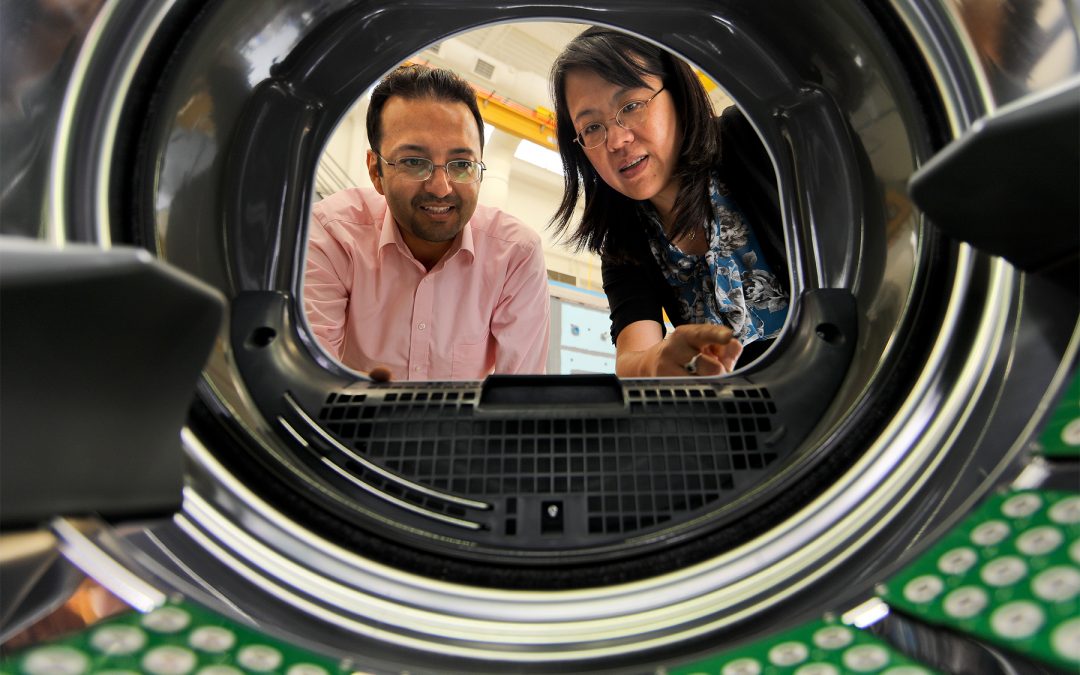In the fall of 2021, Glasgow, Scotland, hosted the 26th United Nations Climate Change Conference, commonly referred to as COP26. During the proceedings, U.S. Secretary of Energy Jennifer Granholm announced the Net Zero World Initiative, an international partnership led by the U.S. Department of Energy (DOE) aimed at helping developing nations around the world achieve net zero greenhouse gas emissions. The program, mirroring the United States’ own commitment to achieving net zero emissions by 2050, seeks to mobilize cutting-edge technology and world-class expertise from the DOE’s national laboratories to help countries achieve this goal.
Alongside colleagues from other national laboratories, Rackham and 1993 Barbour Scholarship alumna Xin Sun (Ph.D., ’95) was there to support Granholm’s announcement. And as associate laboratory director of the Energy Science and Technology Directorate at Oak Ridge National Laboratory in Tennessee, Sun finds herself at the very heart of the DOE’s efforts to make a net zero emissions future a reality.
“I attended COP26 to support the energy secretary and show that our energy infrastructure is there to help net zero become a reality,” Sun says. “At Oak Ridge, we’re focused on energy efficiency and clean energy. Our directorate is organized to cover the entire energy utilization spectrum, from generation to storage and delivery.”
Oak Ridge has been the site of energy research as far back as 1945, and it continues to hold the largest applied energy portfolio of any of the 17 DOE national laboratories operating today. That includes a wide array of emerging clean energy technologies, including improving electric vehicles, integrating renewable energy sources into the national grid, ensuring those sources are resilient in the face of both cyber and natural disasters, and developing ways for the building sector to become carbon neutral—or even carbon negative.
As buildings continuously circulate large quantities of air, Sun sees them not only as significant places to reduce the emissions, but also as valuable tools in stripping excess carbon from the atmosphere using their ventilation systems.
This innovation goes hand-in-hand with another technological development, one Sun personally led until she assumed her current role last year: intensifying point source carbon capture. This technology essentially acts as a large filter, preventing carbon emissions from escaping industrial or power generation facilities as it’s produced.
“I’m really proud of the work Oak Ridge has done in this area,” Sun says. “Carbon capture and conversion is critical to our efforts to become a net zero emissions lab, nation, and world.”
A graduate of the U-M naval architecture and marine engineering program, where she studied the constituent behavior of ice to facilitate arctic exploration, Sun was the recipient of the Barbour Scholarship, allowing her to focus purely on her research for a full year.
“When I was nominated for the Barbour Scholarship, I didn’t know its rich and long history,” she says. “It was only after I graduated that I learned about the impact it’s had and the community of scholars that surrounds it. I feel more honored today than I did when I received it.”
Now, Sun is committed to giving back and investing in the next generation of researchers who will tackle climate, energy, and other key issues our world faces. As an inaugural member of the Rackham Alumni Career Pathways Council, she hopes to help graduate students create rewarding careers that benefit their communities.
“I know my own lab will need to recruit a new cohort of diverse, capable scientists to continue our work, and many other organizations and institutions need the same,” Sun says. “Barbour scholars give back to their communities, and I’m proud to give back to the university that gave me my career and my future. It’s a connection and pride I’ll carry for the rest of my life.”

